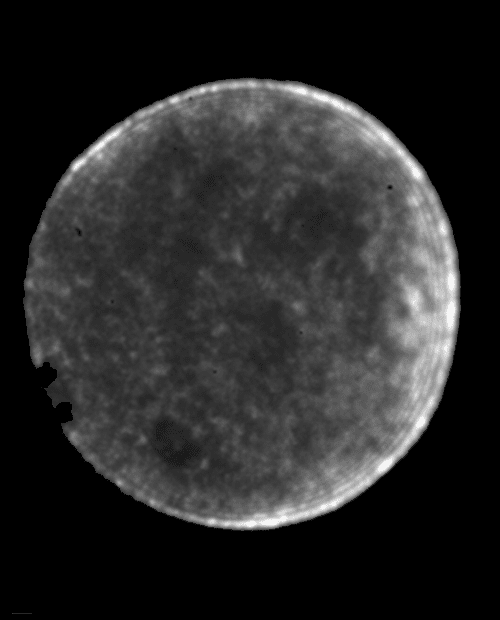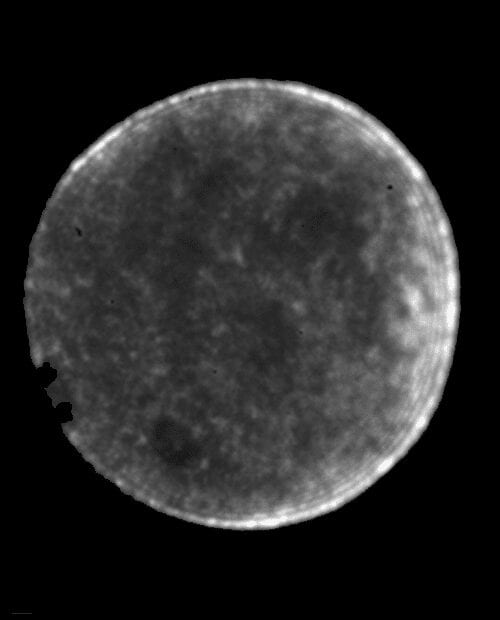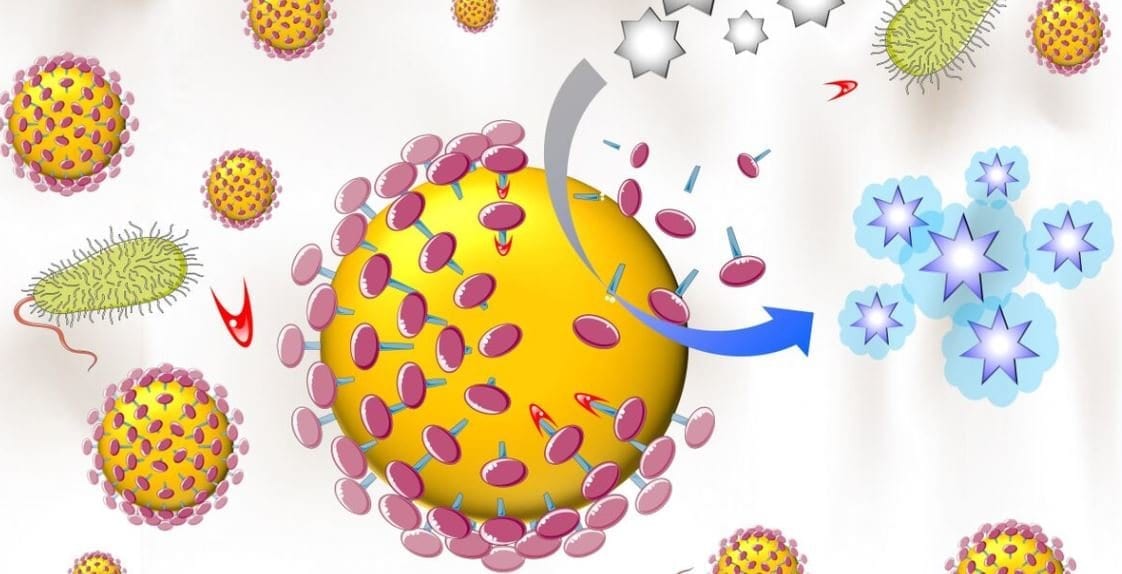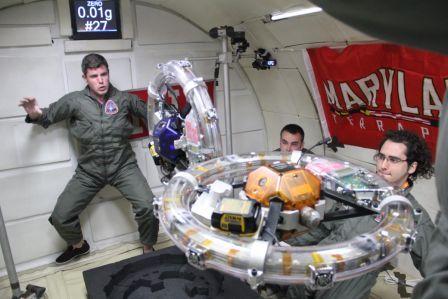
Chemical engineers find that arrays of carbon nanotubes can detect flaws in drugs and help improve production
MIT chemical engineers have discovered that arrays of billions of nanoscale sensors have unique properties that could help pharmaceutical companies produce drugs — especially those based on antibodies — more safely and efficiently.
Using these sensors, the researchers were able to characterize variations in the binding strength of antibody drugs, which hold promise for treating cancer and other diseases. They also used the sensors to monitor the structure of antibody molecules, including whether they contain a chain of sugars that interferes with proper function.
“This could help pharmaceutical companies figure out why certain drug formulations work better than others, and may help improve their effectiveness,” says Michael Strano, an MIT professor of chemical engineering and senior author of a recent paper describing the sensors in the journal ACS Nano.
The team also demonstrated how nanosensor arrays could be used to determine which cells in a population of genetically engineered, drug-producing cells are the most productive or desirable, Strano says.
Lead author of the paper is Nigel Reuel, a graduate student in Strano’s lab. The labs of MIT faculty members Krystyn Van Vliet, Christopher Love and Dane Wittrup also contributed, along with scientists from Novartis.
Testing drug strength
Strano and other scientists have previously shown that tiny, nanometer-sized sensors, such as carbon nanotubes, offer a powerful way to detect minute quantities of a substance. Carbon nanotubes are 50,000 times thinner than a human hair, and they can bind to proteins that recognize a specific target molecule. When the target is present, it alters the fluorescent signal produced by the nanotube in a way that scientists can detect.
Some researchers are trying to exploit large arrays of nanosensors, such as carbon nanotubes or semiconducting nanowires, each customized for a different target molecule, to detect many different targets at once. In the new study, Strano and his colleagues wanted to explore unique properties that emerge from large arrays of sensors that all detect the same thing.
The first feature they discovered, through mathematical modeling and experimentation, is that uniform arrays can measure the distribution in binding strength of complex proteins such as antibodies. Antibodies are naturally occurring molecules that play a key role in the body’s ability to recognize and defend against foreign invaders. In recent years, scientists have been developing antibodies to treat disease, particularly cancer. When those antibodies bind to proteins found on cancer cells, they stimulate the body’s own immune system to attack the tumor.
For antibody drugs to be effective, they must strongly bind their target. However, the manufacturing process, which relies on nonhuman, engineered cells, does not always generate consistent, uniformly binding batches of antibodies.
Currently, drug companies use time-consuming and expensive analytical processes to test each batch and make sure it meets the regulatory standards for effectiveness. However, the new MIT sensor could make this process much faster, allowing researchers to not only better monitor and control production, but also to fine-tune the manufacturing process to generate a more consistent product.
“You could use the technology to reject batches, but ideally you’d want to use it in your upstream process development to better define culture conditions, so then you wouldn’t produce spurious lots,” Reuel says.
Measuring weak interactions
Another useful trait of such sensors is their ability to measure very weak binding interactions, which could also help with antibody drug manufacturing.
The Latest Bing News on:
Nanoscale sensors
- Researcher explains why we should care more about converging technologieson May 7, 2024 at 2:07 pm
Professor Dirk Helbing of ETH Zurich and Austria's Complexity Science Hub expects future digital technologies to penetrate the human body even more in the future. However, he believes that society is ...
- NASA wants to build futuristic levitating rail on the moon (and much more)on May 6, 2024 at 3:58 pm
With all the talk about private companies in space, it’s easy to forget just how much groundbreaking research NASA is carrying out. It’s not all about space flight and telescopes, either. Some of the ...
- The Role of Nanotechnology in Air Purification Advancementson May 6, 2024 at 2:49 am
The pervasive challenge of air pollution poses significant hurdles, inflicting profound adverse impacts on public health and ecosystems. This challenge is compounded by the presence of harmful ...
- Sensors Bolster Army Prowesson May 2, 2024 at 5:00 pm
The Terrain Commander from Textron Corporation provides the basis for the U.S. Army's unattended ground sensor (UGS) Future Combat Systems. The sensor assembly is equipped with a variety of optical, ...
- Nanoscale Sensors and their Applications in Biomedical Imagingon April 27, 2024 at 9:52 pm
The book offers a comprehensive exploration of cutting-edge nano-sensor technologies and their critical role ... from fluorescence-based nanosensors that detect and quantify nanovesicles at the ...
- Nanoscale Thermodynamics: Exploring Energy Interactions at the Nanoscaleon April 15, 2024 at 1:09 pm
Nanoscale thermodynamics also finds applications in the development of highly sensitive and selective nanoscale sensors. Thermodynamic properties, such as the specific heat capacity or thermal ...
- Nanoscale movies shed light on one barrier to a clean energy futureon April 12, 2024 at 5:05 am
Duke University. (2024, April 11). Nanoscale movies shed light on one barrier to a clean energy future. ScienceDaily. Retrieved May 2, 2024 from www.sciencedaily.com / releases / 2024 / 04 ...
- Meet the ‘quantum plumbers’ uncovering the mysteries of fluid mechanics at the nanoscaleon April 8, 2024 at 5:00 pm
Quantum friction might be exploited to develop nanoscale flow sensors or to make ultra-tiny valves for nanofluidics. The discovery of this surprising quantum effect – which even works at room ...
- Nanoscale Horizonson October 18, 2023 at 10:37 pm
Nanoscale Horizons Communications must include a separate ... We report a new tactile electronic skin sensor based on staircase-like vertically aligned gold nanowires (V-AuNWs). With the back-to-back ...
- Nanotechnology in Foodon August 15, 2020 at 1:55 pm
Food safety: Nanoscale sensors and imaging techniques are used to detect food contaminants and pathogens, enabling rapid and effective food safety screening. Crop improvement: Nanotechnology is used ...
The Latest Google Headlines on:
Nanoscale sensors
[google_news title=”” keyword=”Nanoscale sensors” num_posts=”10″ blurb_length=”0″ show_thumb=”left”]
The Latest Bing News on:
Drug production
- See The 50 Most Prescribed Drugs In The US Todayon May 8, 2024 at 11:29 am
Millions rely on medication to manage their health. Whether it’s a quick prescription to treat an illness or a long-term medication for a chronic illness, the vast majority of Americans do ...
- Enhancing efficiency in pharmaceutical production: The role of vacuum tray dryerson May 8, 2024 at 3:33 am
This article explains the role vacuum tray dryers play in pharmaceutical production and how theyminimize quality losses associated with harsh temperature processing to preserve product integrity ...
- Media Release: Sensirion product announcement: miniature liquid flow sensor platform for subcutaneous drug deliveryon May 8, 2024 at 1:08 am
Media Release: Sensirion product announcement: miniature liquid flow sensor platform for subcutaneous drug delivery 08.05.2024 / 08:08 CET/CEST Media Release 08.05.2024, Sensirion AG, 8712 Stäfa, ...
- UQ's AMTAR hub advances the development of hyper-accurate cancer drugson May 7, 2024 at 9:01 pm
The Australian Research Council (ARC) hub for Advanced Manufacture of Targeted Radiopharmaceuticals (AMTAR) is a one-stop-shop connecting biotech firms with expertise and equipment to design, test and ...
- Citi Pharma’s JV to boost local drug productionon May 7, 2024 at 8:40 pm
Citi Pharma Limited, the leading manufacturer of Paracetamol in Pakistan, has announced its venture into a joint partnership with a renowned Chinese firm. The objective is to locally produce 30 ...
- Dunkirk plant to help produce new ImmunityBio cancer drugon May 7, 2024 at 4:20 pm
Dunkirk’s state-of-the-art facility is expected to play a significant role in the production of a new cancer-fighting drug developed by ImmunityBio Inc. and recently approved by the FDA. On Tuesday, ...
- ImmunityBio Completes GMP Drug Substance Manufacturing Sufficient for 170,000 Doses of ANKTIVA®on May 7, 2024 at 5:00 am
ImmunityBio, Inc. (NASDAQ: IBRX) announced today that the drug substance (DS) has been completed and successfully qualified for "fill finish" (filling vials and finishing packaging), sufficient for ...
- The global synthetic drugs crisis has hit West Africa, where people are digging up human bones to make a drug called 'kush'on May 5, 2024 at 6:11 am
An African city has had to put police guards on the cemeteries amid fears drug addicts are robbing skeletons from graves.
- Mexico's chief detective apologizes for 'inadequate' remark about country's fentanyl productionon April 26, 2024 at 3:47 am
Gallo said Mexican cartels have launched industrial-scale production of meth in many states throughout the country and now export the drug around the world. "Believe me, methamphetamine production ...
- Malaria is still killing people in Kenya, but a vaccine and local drug production may helpon April 25, 2024 at 12:50 am
Malaria is still a significant public health challenge in Kenya, but an important pilot of the world’s first malaria vaccine may help ...
The Latest Google Headlines on:
Drug production
[google_news title=”” keyword=”drug production” num_posts=”10″ blurb_length=”0″ show_thumb=”left”]











